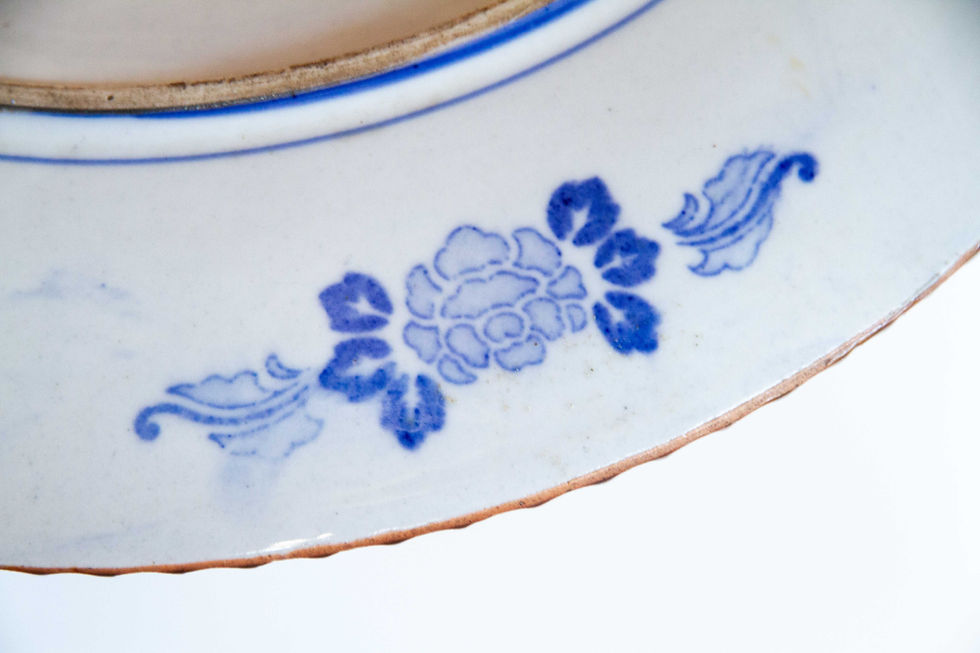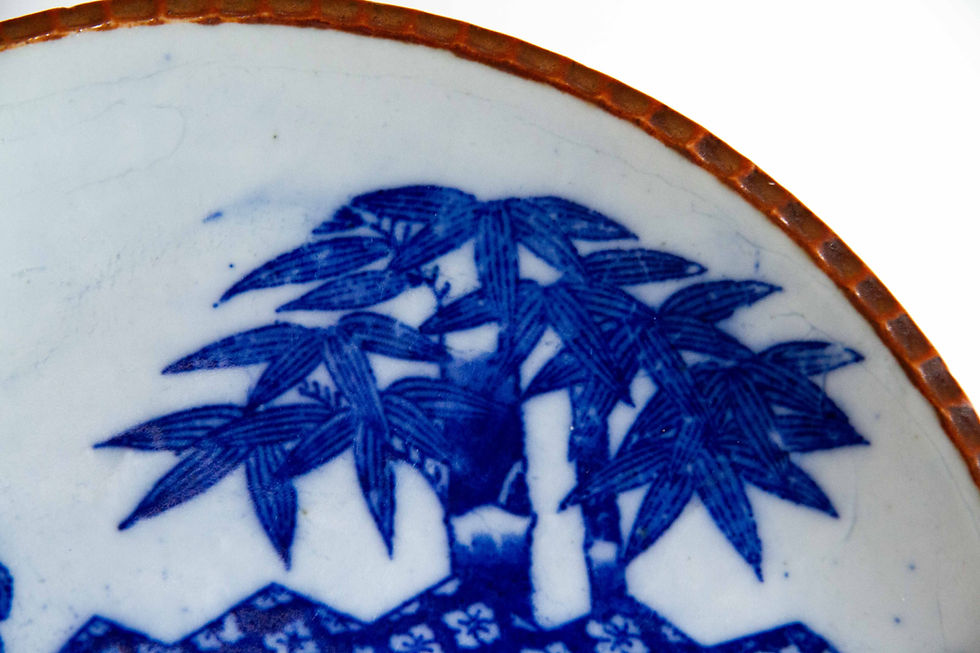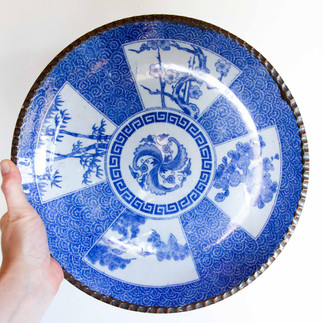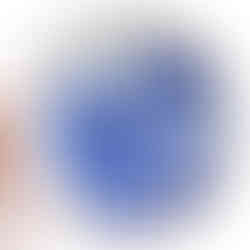Igezara Gems
- Christina

- Jul 31
- 4 min read
Welcome to the beautiful world of Igezara!

Igezara are antique plates created hundreds of years ago in Japan.
Ige- is a word for iga (thorn) in the dialect of the Imari (Saga) region. It is called an Ige dish because of the jagged edge of the plate. It is jagged because when it came “out of the kiln, the pinched areas were 'sharp as thorns' before being smoothed down”. Since sara or zara is “plate”, Igezara means “thorn plates”.




These dishes were mass produced in the Imari and Mino regions from the late Edo period to the early Showa period. The Edo period (1603-1868) came to an end and the Meiji period (1868-1912) began to open its borders to the rest of the world. With this modernization, there came a greater popularity in ceramic tableware. These particular plates were made for the common person so they were thickly potted in order to withstand daily wear and tear.
The plates are white and blue (gosu), and are accented with rusted edges of iron glaze.
The design of the plates moved from being handprinted to utilizing the technique of inban - the print transferring of designs onto pottery. There are many common traditional patterns featured on the plates.
TRADITIONAL PATTERNS

Traditional patterns include Reverse Gem's own Segaiha. This literally means "blue wave of the sea". It is a repetitive pattern of layered concentric circles creating arches which are symbolic of waves.
Below the waves on this same plate, displays the pattern Shippo. This directly translates to "seven treasures". The circles overlap in quarters which resemble petals. Each center then forms a shining star.


There are many other patterns such as Asanoha (hemp leaf), Kanoko (deer child), karakusa (Chinese grass) and Yagasuri (fletching) to name just a few.
FLOWERS
Flowers are also a very common motif. The most common flowers found are ume (plum blossoms), sakura (cherry blossoms), botan (peony), asagao (morning glory), kiku (chrysanthemun), tsubaki (camilia) and Kosai (iris).







FOLIAGE
Other foliage is common such as matsu (pine) and take (bamboo).

Pine trees remain green all year round. As such, it symbolizes longevity, constancy and wisdom.

Bamboo is a strong, flexible and fast-growing plant. In Japan, it is a symbol of strength, flexibility and prosperity.




MOUNTAINS
Mountains are an important design of course Mt Fuji being the most famous one of all.





Other natural elements such as rivers, waves, and clouds, are also regular patterns that get featured on these plates.
ANIMALS
Animals represent an important aspect of design especially the tsuri (crane). They are often depicted in art and used for weddings and celebrations. These are symbolic of longevity and good fortune. Other common animals, and not limited to, include koi, turtles, dragons, lion dogs, butterflies and dragonflies.


OBJECTS
You may have noticed a few other designs on the plates. Such designs portray common objects. A few examples of traditional common objects are Sensu (folding fan), Byobu (folding screen) Noshi (colored ribbons tied together), Temari (decorative balls), Taiko (drums), Kasa (umbrella) and Hanaguruma (small carts filled with flowers).
The shape surrounding the images above is called a sensu (fan). The sensu is a symbol of prosperity. The opening movement of the fan is reminiscent of a blooming flower.
The geometric shape highlighted in red above is a Byobu. Byobu is a traditional Japanese folding screen. Byobu literally means "wind walls". They were originally created to act as windbreakers inside Japanese residences. They became ornate mobile walls which aided in separating interior spaces and providing privacy. They are symbols of status and artistry.

Not without surprise, these dishes have become very popular with foreign antique collectors. They certainly add a unique touch to your home. Show these special plates off as decoration or enhance your dining experience by incorporating them in your meal!
These gems will be available in the upcoming Gem Drop on August 4, 2025 (Japan Time) on this site.
























How beautiful! I appreciate you taking the time to share the history Christina!